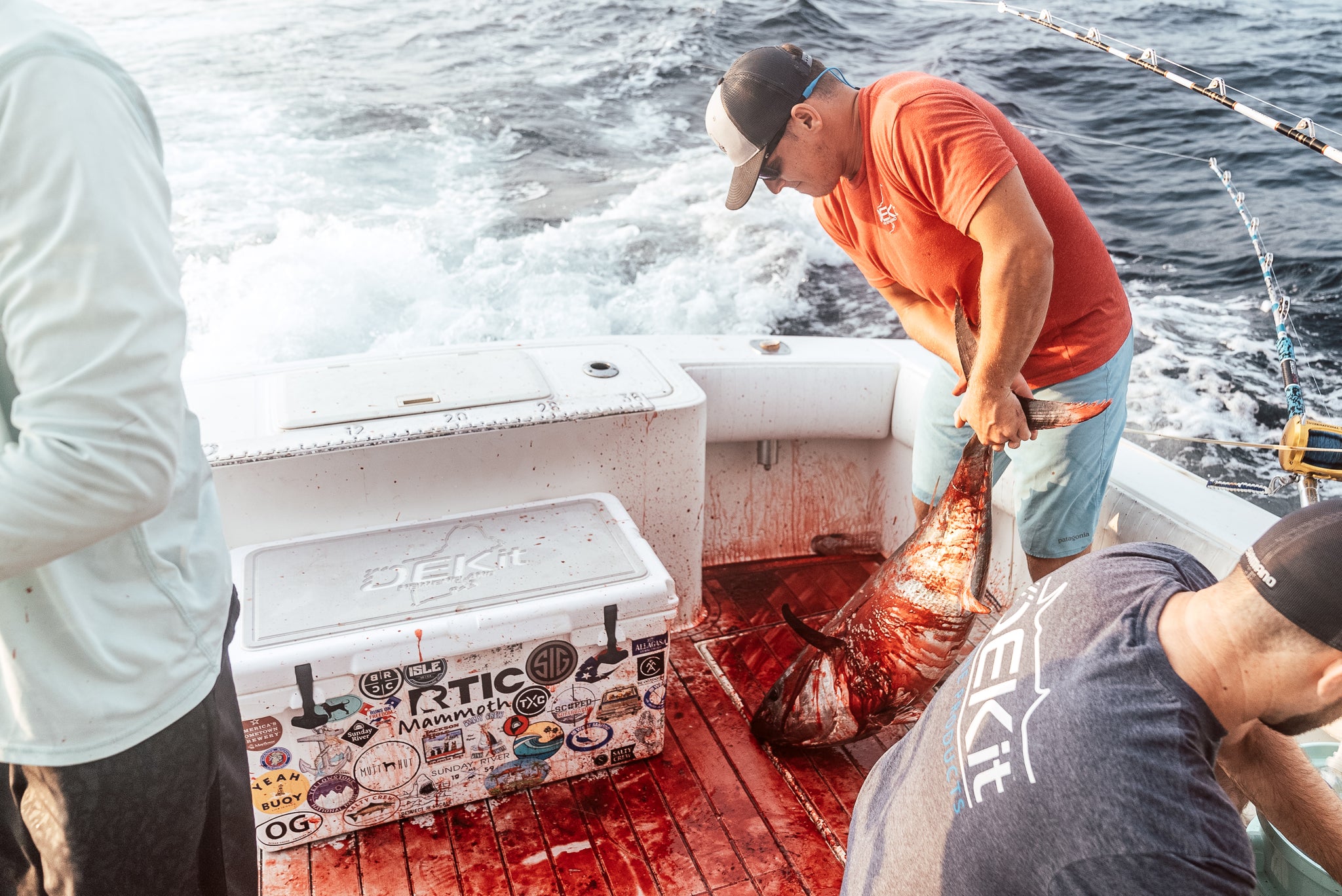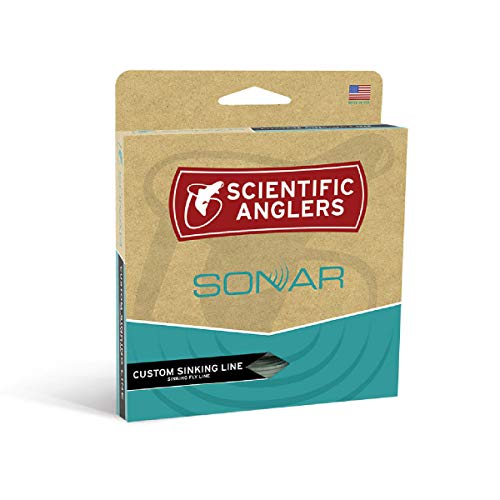Yes, you can catch tuna while surf fishing as they may come close to shore in search of prey. Tuna can often be found in the surf, making it possible to catch them using the right techniques and gear.
Surf fishing for tuna requires knowledge of their habits, suitable bait, and proper casting techniques to attract and hook these powerful fish. With appropriate gear and skills, surf fishermen have a chance to land tuna, providing an exciting and rewarding angling experience.

Credit: dekit.com
Surf Fishing: An Introduction To The Sport
Are you ready to dive into the exciting world of surf fishing? This thrilling sport combines the tranquility of the beach with the anticipation of reeling in a big catch. Whether you’re a seasoned angler or new to fishing altogether, surf fishing offers a unique experience that’s hard to beat.
In this section, we’ll explore the basics of surf fishing, delve into the thrill of catching fish from the shore, and weigh the pros and cons of this beloved pastime.
Understanding The Basics Of Surf Fishing
When it comes to surf fishing, it’s important to have a solid understanding of the basics before you hit the beach. Here are some key points to consider:
- Surf fishing involves casting your line from the shore into the ocean, targeting species such as tuna, striped bass, and flounder.
- The right equipment is crucial. Make sure to invest in a sturdy surf rod, a durable spinning reel, and appropriate tackle for your target fish species.
- Timing is everything. Pay attention to the tides and choose the best time to fish when fish are more likely to be feeding closer to the shore.
- Familiarize yourself with the beach and its unique features. Look for sandbars, currents, and troughs which can attract fish and increase your chances of a successful catch.
- Patience is key in surf fishing. Sometimes it takes time to locate the hotspots and get the fish biting.
Exploring The Thrill Of Catching Fish From The Shore
One of the most exhilarating aspects of surf fishing is the thrill of reeling in a fish from the shoreline. Here are a few reasons why this sport is so loved by anglers:
- The challenge: Surf fishing requires skill and technique. Feeling the tug on your line and successfully bringing in a fish provides a sense of accomplishment and excitement.
- The connection to nature: Standing on the shoreline, listening to the crashing waves, feeling the saltwater spray, and witnessing the beauty of the ocean creates a unique connection with nature.
- The variety of species: Surf fishing offers the opportunity to catch a wide range of species depending on your location and target fish. From feisty snook to powerful redfish, there’s always a new challenge waiting.
- The unpredictability: Every cast brings the element of surprise. You never know what might bite and the anticipation of reeling in a big catch keeps the excitement flowing.
The Pros And Cons Of Surf Fishing
Like any sport, surf fishing has its advantages and disadvantages. Here’s a quick overview:
Pros:
- Accessible: Surf fishing can be enjoyed by anyone with access to a beach. No boat or specialized equipment is required.
- Cost-effective: Compared to other forms of fishing, surf fishing is relatively affordable. You don’t need a ton of expensive gear to get started.
- Scenic surroundings: The backdrop of the beach, the sound of the crashing waves, and the breathtaking sunsets make surf fishing a visually stunning experience.
- Physical activity: The act of casting, reeling, and wading through water provides a good workout, helping to improve strength and cardiovascular health.
Cons:
- Weather dependency: Surf fishing is heavily influenced by weather conditions such as wind and storms. Unfavorable weather can make fishing challenging or even dangerous.
- Crowded beaches: During peak seasons, popular fishing spots can become crowded with anglers and beachgoers, making it harder to find a quiet spot to cast your line.
- Limited fishing opportunities: While some species can be caught from the shore, others may require a boat to reach deeper waters. This limitation may restrict the variety of fish you can target.
By understanding the basics of surf fishing, embracing the thrill of catching fish from the shore, and weighing the pros and cons, you can determine if this sport is right for you. So grab your surf rod, pack your tackle box, and get ready to embark on an unforgettable adventure in surf fishing!
The Tantalizing Tuna: A Deep Dive Into The Species
Tuna is a beloved and sought-after fish for both recreational and commercial fishermen. Its powerful and streamlined body, coupled with its vibrant coloration, make it a fascinating creature to observe. In this section, we will delve into the characteristics, behavior, and culinary popularity of tuna.
Getting To Know Tuna: Characteristics And Behavior
- Tuna are large, migratory fish that can grow up to a massive ten feet in length. They are known for their torpedo-shaped bodies and sleek, metallic blue or deep red coloration.
- Tuna possess a unique circulatory system that enables them to maintain an elevated body temperature. This adaptation allows them to thrive in various water temperatures, making them highly adaptable to different environments.
- These voracious predators have incredible speed and agility, enabling them to pursue and catch their prey with precision. Tuna are known for their swift swimming speeds, reaching up to 45 miles per hour.
- Like many migratory fish, tuna travel long distances in search of food and ideal breeding grounds. They have a complex reproductive cycle, with females capable of releasing millions of eggs during spawning.
Understanding The Different Types Of Tuna
- There are several different species of tuna, each with its own unique characteristics and culinary traits. Some of the most popular varieties include:
- Bluefin tuna: Prized for its tender and flavorful meat, bluefin tuna is a highly sought-after delicacy in sushi and sashimi dishes.
- Yellowfin tuna: With its mild yet distinctive flavor, yellowfin tuna is a favorite among seafood enthusiasts. It can be enjoyed raw, grilled, or seared.
- Albacore tuna: Known for its pale flesh and mild flavor, albacore tuna is often canned and used in salads, sandwiches, and casseroles.
- Each type of tuna has its preferred habitat and migratory patterns. Bluefin tuna, for example, is known for its transoceanic migrations, while yellowfin tuna typically inhabits tropical and subtropical waters.
The Popularity Of Tuna In The Culinary World
- Tuna’s versatility in the kitchen has catapulted it to culinary stardom. It is highly prized for its delicate flavor, firm texture, and ability to absorb the flavors of various marinades and spices.
- Sushi and sashimi aficionados particularly appreciate the smooth, buttery texture of raw tuna. Its rich flavor and melt-in-your-mouth quality make it a staple in japanese cuisine.
- Tuna steaks, often grilled or seared, have become a favorite among seafood lovers worldwide. Their robust flavor pairs well with a variety of seasonings, making them a versatile main dish option.
- Canned tuna is a pantry staple for many, offering a convenient and affordable option for sandwiches, salads, and casseroles. Its long shelf life and high protein content make it a popular choice for those seeking a quick and nutritious meal.
Whether you’re an angler, a food enthusiast, or simply appreciate the beauty of these magnificent fish, tuna is a species that captivates both in the wild and on the plate.
Mastering The Art Of Catching Tuna While Surf Fishing
Surf fishing for tuna can be an exhilarating experience, but it requires skill and strategy to master the art of catching these powerful fish. In this section, we will dive into the key aspects of tuna surf fishing, from selecting the right equipment to understanding tuna feeding patterns and everything in between.
So grab your fishing gear, put on your sunscreen, and get ready for an adventure on the surf!
Selecting The Right Equipment For Tuna Surf Fishing
When it comes to tuna surf fishing, having the right equipment can make all the difference. Here are some key points to consider:
- Choosing the perfect fishing rod and reel:
- Opt for a strong and durable rod that can handle the weight of tuna.
- Look for a reel with a high line capacity and smooth drag system for battling these powerful fish.
- Deciphering the best fishing line and leader options:
- Select a braided fishing line with a high pound test to withstand the strength of tuna.
- Attach a fluorocarbon leader to your mainline for added stealth and abrasion resistance.
Bait And Lure Selection For Tantalizing Tuna
Successfully enticing tuna requires careful consideration of bait and lure selection. Here are some recommendations:
- Natural baits for tuna surf fishing:
- Fresh baitfish like mackerel, sardines, or anchovies are excellent choices.
- Live bait can be more enticing to tuna than dead bait.
- Lure recommendations for a successful tuna catch:
- Topwater poppers and stickbaits can mimic injured baitfish and trigger aggressive strikes.
- Jigs with shiny and reflective finishes can imitate small fish and attract tuna.
Techniques And Strategies For Catching Tuna From The Surf
Mastering the techniques and strategies for catching tuna from the surf can greatly enhance your chances of success. Consider the following key points:
- Understanding tuna feeding patterns and locations:
- Tuna often feed near structure, such as rocky outcrops or underwater features.
- Look for signs of baitfish activity, like jumping or diving birds, as indicators of tuna presence.
- Tips for casting and retrieving techniques:
- Cast your bait or lure beyond the breaking waves to reach deeper waters where tuna may be lurking.
- Utilize a fast and erratic retrieve to imitate the movements of fleeing prey.
Navigating Challenges And Celebrating Successes
Tuna surf fishing can present its fair share of challenges, but with perseverance, success is within reach. Consider the following points:
- Handling seasonal changes and weather considerations:
- Different species of tuna may be more prevalent during specific seasons.
- Keep an eye on weather conditions, as tuna tend to be more active during periods of stable weather.
- Troubleshooting common issues in tuna surf fishing:
- If you’re not getting bites, try adjusting your bait or lure presentation.
- Experiment with different depths and retrieval speeds to find what works best on a given day.
With the right equipment, bait or lure selection, and knowledge of tuna behavior, you’ll be well-equipped to embark on your tuna surf fishing adventure. So get out there, enjoy the thrill of the surf, and reel in a prized catch!
The Legal And Ethical Aspects Of Tuna Surf Fishing
Surf fishing is a thrilling and rewarding experience for many anglers. As the waves crash against the shoreline, surf fishermen cast their lines into the deep blue sea, hoping to reel in a big catch. One prized species that surf fishermen often target is tuna.
The powerful fight and delicious taste of tuna make it a highly sought-after fish. However, when it comes to tuna surf fishing, it is essential to consider the legal and ethical aspects of this popular activity.
Fishing Regulations And Licensing Requirements
Before heading out to the surf, it is crucial to familiarize yourself with the fishing regulations and licensing requirements in your area. These regulations are put in place to protect the fish populations and ensure sustainable fishing practices. Here are some key points to keep in mind:
- Check the fishing regulations: Each state or region may have specific regulations regarding tuna fishing from the shore. It is essential to review and follow these regulations to avoid any legal issues.
- Obtain the appropriate license: In many areas, a fishing license is required to fish for tuna. Make sure to obtain the necessary license before embarking on your surf fishing adventure.
- Know the size and bag limits: Fishing regulations often impose size and bag limits on tuna catches. Familiarize yourself with these limits to ensure you are harvesting fish within legal boundaries.
- Stay up to date with changes: Fishing regulations can change, so it is important to stay informed about any updates or modifications to the rules. Check local fishing websites or contact your nearest fish and wildlife organization for the most recent information.
Responsible Catch And Release Practices
While landing a massive tuna can be an exhilarating experience, it is crucial to practice responsible catch and release techniques to preserve the fish population for future generations. Here are some guidelines to follow:
- Use barbless hooks: Barbless hooks are easier to remove, minimizing injury to the fish during the release.
- Handle with care: When handling a caught tuna, make sure to wet your hands first to avoid removing its protective slime layer. This layer helps the fish fend off infections and parasites.
- Release unharmed fish: If the fish is healthy and in good condition, release it back into the water as quickly as possible. Avoid keeping fish that are injured or likely to die.
- Gentle release: When releasing the fish, hold it upright in the water and let it swim away on its own. Do not toss or throw the fish back into the water, as this can cause injury.
Promoting Sustainable Fishing: How To Minimize Impact
To ensure the long-term sustainability of tuna populations, surf fishermen can take specific measures to minimize their impact on the environment. Consider these tips to promote sustainable fishing practices:
- Use circle hooks: Circle hooks are designed to hook fish in the mouth, reducing the chances of deep-hooking and giving you the option to release undersized or unwanted catches.
- Avoid using excessive force: When fighting and landing a tuna, apply steady pressure and avoid using excessive force. This helps prevent unnecessary stress and injuries to the fish.
- Be mindful of nesting areas: Avoid fishing in areas where tuna or other marine species are known to spawn or nest. By doing so, you can prevent disrupting their reproductive cycles.
- Dispose of waste responsibly: Properly dispose of any fishing-related waste, such as lines, hooks, and packaging. These items can be detrimental to marine life if ingested or entangled.
By adhering to fishing regulations, practicing responsible catch and release, and promoting sustainable fishing practices, surf fishermen can enjoy the thrill of catching tuna while also protecting the environment. Remember, the future of tuna surf fishing relies on our collective efforts to fish responsibly and sustainably.
Frequently Asked Questions About Catching Tuna While Surf Fishing
What Is The Best Time Of Year To Catch Tuna From The Surf?
Tuna fishing from the surf can be an exhilarating experience, but it’s important to know the best time of year to increase your chances of success. Here are a few key points to keep in mind:
- Spring and fall are generally considered the best seasons for surf fishing tuna. During these times, tuna migrate closer to shore in search of food, making them more accessible to surf anglers.
- Water temperature plays a crucial role in tuna activity. Tuna prefer warmer waters, so aim to fish when the water temperature ranges between 60°f (15.5°c) and 80°f (26.5°c).
- Pay attention to local fishing reports and consult with experienced anglers or local tackle shops to get the latest information on tuna migration patterns and activity in your area.
- Weather conditions can also affect tuna fishing. Calm, clear days with minimal wind and waves provide ideal conditions for surf fishing tuna. Keep an eye out for days with favorable weather forecasts.
Is Surf Fishing For Tuna Suitable For Beginners?
If you’re new to surf fishing and have your sights set on catching tuna, here’s what you need to know:
- Surf fishing for tuna can be challenging and requires some experience and skill. Tuna are strong, fast, and can put up a tough fight, so having some knowledge of saltwater fishing techniques is beneficial.
- It’s important to have the right equipment, including a sturdy surf rod, a reel with a high line capacity, and strong fishing line.
- Patience and persistence are key. Tuna may not always be present, so be prepared to spend time on the water and adapt your strategy accordingly.
- Consider starting with smaller tuna species such as skipjack or bonito, which are more abundant and can provide a great learning experience before targeting larger tuna species.
- Don’t hesitate to seek advice and guidance from experienced surf anglers or join fishing forums and communities to learn from others’ experiences.
What Are The Different Techniques For Land-Based Tuna Fishing?
When it comes to land-based tuna fishing, there are various techniques you can try. Here are a few options to consider:
- Casting and retrieving: This technique involves casting a lure or bait into the surf and retrieving it at a steady pace. Pay attention to the lure’s action and mimic the movements of a wounded baitfish to entice tuna.
- Live bait fishing: Using live bait can be highly effective for targeting tuna. Rig a live baitfish on a sturdy hook and cast it out into the surf. Allow the baitfish to swim naturally, enticing tuna to strike.
- Chunking: Chunking involves cutting up baitfish into smaller chunks and dispersing them in the water to create a scent trail. This technique can attract tuna to your fishing spot, increasing your chances of a successful catch.
- Jigging: Jigging is a popular technique for targeting tuna. Use a heavy jigging lure designed for saltwater fishing, drop it down into the water, and jerk it up and down to mimic the movement of a wounded baitfish.
Remember, the effectiveness of each technique can vary depending on factors such as location, tuna species, and prevailing conditions. It’s always a good idea to experiment with different techniques and adapt your approach based on the situation.
So there you have it – some key points to consider when it comes to catching tuna while surf fishing. Whether you’re a beginner or an experienced angler, with the right knowledge, preparation, and a bit of luck, you can have a thrilling and rewarding tuna fishing experience from the surf.
Conclusion
Catching tuna while surf fishing can be an exhilarating and rewarding experience. With the right gear, knowledge, and techniques, it is definitely possible to hook into these powerful fish from the shore. By understanding their behavior and migration patterns, targeting the right areas, and using the appropriate bait and lures, you increase your chances of success.
Always keep in mind the importance of safety and conservation when attempting to catch tuna surf fishing. Respect the environment and the fish themselves, and release any undersized or non-target species. Remember, proper catch and release practices help ensure the longevity and sustainability of these magnificent creatures.
So, if you’re up for a thrilling challenge and want to test your surf fishing skills, give tuna fishing a try! With practice, patience, and perseverance, you might just reel in the fish of a lifetime. Enjoy the excitement of the sport, the beauty of the ocean, and the opportunity to connect with nature on a deeper level.
Happy fishing!




